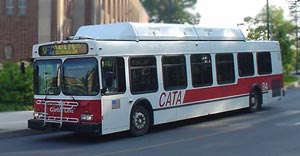While browsing our class’s passion blogs, I came across two that piqued my interest a lot–each for a different reason. The first is Austin’s “Video Games: Why They Matter.” Austin is in my blog group, and I’ve been keeping up with his latest posts. One of the first things that I noticed is the format. It has an image at the top and a cloudy border around the edges, but the text is clean and simple, set on a crisp white backdrop. I think that the format and style of a website are the first thing a reader notices when visiting any website–if a website is too confusing, regardless of it’s topic I’m a bit less likely to read it. I’m not really all that into video games, but Austin still manages to hold my interest in his posts. His blog is written from a hobbyist’s perspective–someone who likes and is passionate about video games–but his blog is not the nerdy gamer blog one might expect. He writes more about video games as a whole and less about specific games. As someone who doesn’t really play video games, that helps the blog stay interesting to me. For example, I enjoyed one of his posts entitled The Power of Music in Video Games. In it he takes a topic that I can relate to–music–and shows how it relates to video games and why it is so important to various games. Another thing Austin does is to involve his readers with multimedia clips or links to online games to demonstrate his points.
Another that caught my eye was Erin’s blog, “iDon’t: Surviving life with a dumb-phone and a primitive state of mind.” Like Austin’s, this blog is also simply formatted, with an image banner at the top and a clean, white background behind an easy-to-read font. Erin’s blog is unique in that it provides a window into a lifestyle that I would have otherwise not been able to experience or appreciate as fully: life without a smartphone. Whereas I could pick up a video game and experience a bit of what Austin is talking about, it is unlikely that I would voluntarily forego the use of my iPhone–it is too essential to communication and (believe it or not) productivity. Erin’s blog embraces the dumb-phone lifestyle and relates it to readers like me. My curiosity prompted me to check it out, and even though it tends to be a bit anti-technology at times, it’s still a good read. I think perhaps one of the best attributes of Erin’s blog is its name: iDon’t. Yes, it might be a bit cliche, but it got me to click the link, and that’s all that matters.
I think that’s one of the most important (but hardest) thing a blog has to accomplish: to generate interest–to get people to click on the link. That’s half the battle. A blog can have great content and excellent formatting, but if the title can’t grab someone’s attention, no one will read it. The second most important feature is formatting; once someone clicks, is the page visually pleasing and easy to read? I tend to like the blogs with white backgrounds behind the text, although some other color/image backgrounds seem to work okay as well. Most of the blogs I visited had a clear layout, but for those that didn’t, the layout slightly detracted from the content–another important aspect of the blog. While perusing all of the blogs, I came across many unique ideas and a lot of great writing. It was evident that the writer’s of most blogs were genuinely interested in their topics, and that passion came across in the writing.
All in all, I think our class is doing a great jobs with the blogs–it just might be a challenge to attract viewers sometimes.


Recent Comments